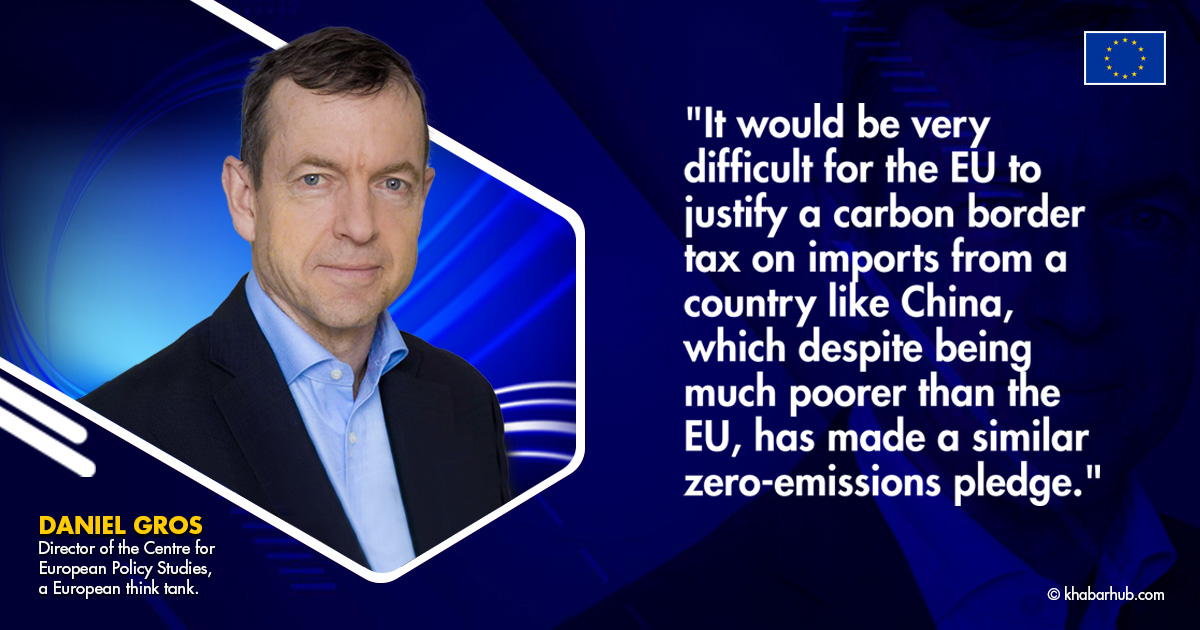At the recent United Nations General Assembly, Chinese President Xi Jinping declared that his country will strive to become carbon neutral by 2060.
It was a potentially highly consequential announcement, and it deserves more attention – not least from the European Union.
China produces nearly 30% of global carbon dioxide emissions from fossil fuels – about twice the share of the United States and three times that of the EU.
Moreover, China’s emissions are likely to continue increasing – Xi promised only that they would peak by 2030 – whereas the EU already has plans to cut its emissions by another 30 percentage points.
Given the sheer size of its market, China’s adoption of such technologies will have far-reaching implications for the green transition globally.
This means that, by 2030, China’s emissions might be 4-5 times the EU level. For this reason, China’s achievement of carbon neutrality would have a much larger climate impact than Europe’s efforts.
For the time being, a carbon-neutral China remains a vague political aspiration. The next step would be a formal commitment by China under the Paris climate agreement, followed by a clear and credible plan, with concrete milestones, for fulfilling that commitment.
China is likely to take these steps. After all, climate action is the one policy area where China genuinely can become a global leader in the near future, and the promise of carbon neutrality plays to China’s strengths – namely, the government’s ability to marshal vast amounts of investment in pursuit of an ambitious long-term goal.
The most modern and efficient steel-production facilities are being built in China, not Europe (where producers balk at the cost of refurbishing their old mills).
Furthermore, though China’s saving rate has diminished somewhat in recent years, it still saves much more than Europe or the US.
This implies that it can afford to invest in capital-intensive renewables like photovoltaic and wind, and to upgrade its housing stock.
China can also afford to lose the resources that have been – and will be – spent on coal-fired power plants that will soon be rendered useless.
It helps that the costs of renewables have fallen to levels that enable them to compete with fossil fuels. And as experience – for example, with batteries – has shown, when production is increased significantly, unit costs will fall further and faster.
Given the sheer size of its market, China’s adoption of such technologies will have far-reaching implications for the green transition globally.
In fact, the Chinese market is already shaping sectors that are essential to the green transition – including energy and automobiles – though often in complicated ways. China is the world’s largest market for cars with internal combustion engines, as well as for electric vehicles.
The electricity needed to power the EVs still comes from coal-fired power plants, which not only emit greenhouse gases, but also pollute the local environment. But China also invests more in renewables than any other country.
If China commits fully to a green transition, technologies like EVs and renewables are likely to become cheaper and more accessible than ever, with practical implications for Europe.
For starters, China’s commitment would render the carbon border tax – a central element of the European Commission’s climate strategy – unworkable.
The Paris climate agreement, like the Kyoto Protocol that preceded it, is based on the principle of differential treatment of emerging economies, which have contributed far less to climate change than today’s developed countries.
It would be very difficult for the EU to justify a carbon border tax on imports from a country like China, which despite being much poorer than the EU, has made a similar zero-emissions pledge.
If China implements its long-planned emissions-trading system, and extends its coverage to industry, the EU’s justification for imposing a carbon tax on Chinese imports would be eviscerated (after all, the EU’s own Emissions Trading System is a sensible market-led approach, at least for industry and power generation).
Moreover, a carbon border tax can be defended only on the grounds that foreign production is much more carbon-intensive than European production.
And while that may be partly true in China today, it will not remain so for much longer. The most modern and efficient steel-production facilities are being built in China, not Europe (where producers balk at the cost of refurbishing their old mills).
If China implements its long-planned emissions-trading system, and extends its coverage to industry, the EU’s justification for imposing a carbon tax on Chinese imports would be eviscerated (after all, the EU’s own Emissions Trading System is a sensible market-led approach, at least for industry and power generation).
In that case, among the EU’s major trading partners, only the US would still be subject to a EU carbon border tax.
China’s green transition creates another conundrum for the EU: the technologies on which it rests are often developed and produced with support from the Chinese government.
What should the EU do when such state-supported technologies arrive at its borders?
This dilemma is not new. In 2013, the EU imposed anti-dumping and anti-subsidy duties on Chinese solar panels.
But the measures were gradually reduced, and eliminated in 2018. As much as the EU wanted to protect local producers of solar panels, getting renewables to world market prices was vital to support progress toward sustainability goals.
How the EU responds to the future arrival of green technologies from China remains to be seen.
What already seems clear is that China’s dual role – recognized by the European Commission – as a competitor and a partner will shape the ongoing green transition, with China’s efforts both facilitating and challenging the EU’s own plans and policies in unanticipated ways.
(Daniel Gros is Director of the Centre for European Policy Studies)
Copyright: Project Syndicate, 2020









Comment